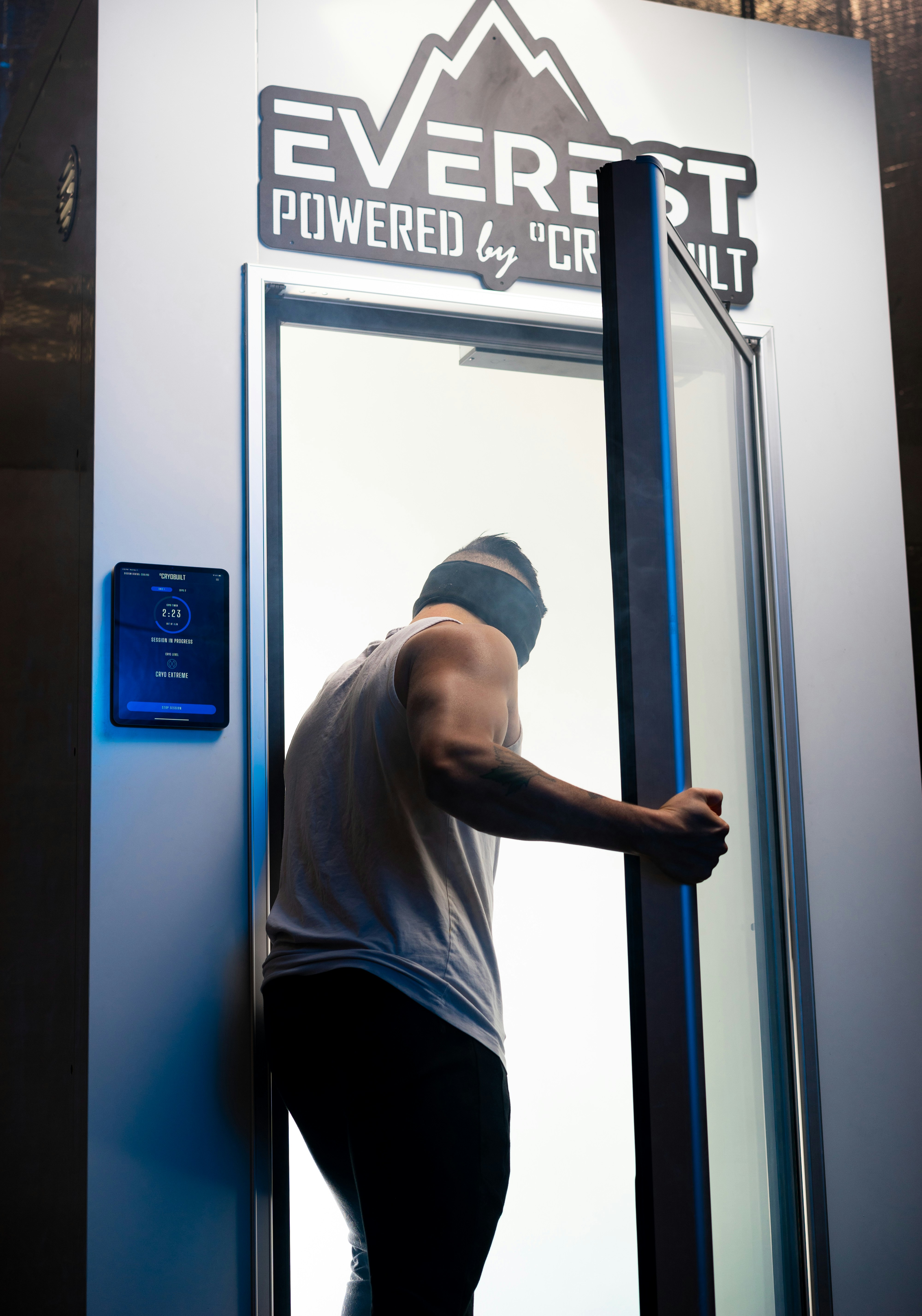Have you ever wondered how something as simple as cold therapy could make a difference in managing autoimmune disorders? You might find it fascinating that cold therapy, also known as cryotherapy, has been gaining attention for its potential benefits in this area. Let’s dive into the chilling world of cold therapy and explore how it could be a game-changer in your journey toward better health.
Understanding Cold Therapy
Cold therapy involves applying cold to your body, which is often achieved through various methods such as ice packs, cold baths, or specialized cryotherapy chambers. The concept itself seems straightforward, but its applications and benefits are both profound and varied. By briefly exposing your body to cold temperatures, you could potentially reduce inflammation, alleviate pain, and enhance your overall well-being.
Types of Cold Therapy
There are several ways you can experience cold therapy:
-
Ice Packs or Compresses: These are likely the most accessible form of cold therapy. Simply wrap some ice in a cloth and apply it to the affected area.
-
Cold Baths: Submerging parts of your body in cold water can also provide the cooling effects you’d expect from a treatment like this.
-
Whole Body Cryotherapy Chambers: These are specialized chambers where you expose your entire body to ultra-cold temperatures for short periods, often ranging from two to four minutes.
Have these options piqued your curiosity about how they could play a role in managing autoimmune conditions?
What Are Autoimmune Disorders?
Autoimmune disorders occur when your immune system mistakenly attacks healthy cells in the body. There are more than 80 types of these disorders, each affecting different parts of the body in unique ways. The common link is the immune system’s malfunction, leading to inflammation and damage to various tissues and organs.
Common Types of Autoimmune Disorders
To give you a clearer picture, here are some of the most common autoimmune disorders that people experience:
| Disorder | Description |
|---|---|
| Rheumatoid Arthritis | A chronic inflammatory disorder affecting joints. |
| Lupus | A disease that can cause inflammation in different body parts. |
| Multiple Sclerosis | A condition where the immune system attacks the protective covering of nerves. |
| Psoriasis | An autoimmune disorder that causes skin cells to multiply too quickly. |
These conditions can be life-altering, often requiring significant lifestyle adjustments and ongoing management strategies.
Symptoms and Challenges
Living with an autoimmune disorder can present daily challenges. Some common symptoms you might encounter include fatigue, joint pain, swelling, skin problems, and digestive issues. These symptoms can fluctuate, often with periods of flare-ups and remissions, making it difficult to predict how you might feel from one day to the next. Managing these symptoms effectively requires a comprehensive approach, which is why you might be curious about how cold therapy fits into this picture.
How Cold Therapy Benefits Autoimmune Disorders
You may now be wondering, how exactly does cold therapy contribute to managing these disorders? Let’s look at some potential benefits that could make a real difference for you.
Reducing Inflammation
One of the primary uses of cold therapy is its ability to reduce inflammation. When you apply cold to an area of your body, it causes blood vessels to constrict, which can decrease blood flow and subsequently reduce swelling and inflammation. This is particularly beneficial if you are dealing with painful joints or inflamed tissues, common concerns with many autoimmune disorders.
Pain Relief
Cold therapy can also serve as a natural pain reliever. The numbing effect that cold has on your nerves can lessen your perception of pain, giving you a break from the discomfort that often accompanies autoimmune conditions. Whether it’s through an ice pack or a short session in a cryotherapy chamber, this form of relief can be both immediate and welcome.
Improved Recovery and Energy Levels
Another potential benefit you might appreciate is improved recovery time and increased energy. Regular exposure to cold can help your muscles recover more quickly from exertion. You may find that you have more energy and are less fatigued, allowing for a more active and fulfilling lifestyle.
Boosting Immune Function
Interestingly, cold therapy may also boost your overall immune system. This might seem counterintuitive given its use in autoimmune disorders, but the idea is that periodic cold exposure can modulate immune responses, possibly reducing the severity and frequency of flare-ups.
Incorporating Cold Therapy Into Your Routine
Now that you’re intrigued by the potential benefits, you might be wondering how to effectively incorporate cold therapy into your existing routine. Here’s how you can start.
Safe Practices
It’s essential that you use cold therapy safely to prevent any adverse effects. Start with short durations and gradually increase as your body becomes accustomed to the cold. Ensure you’ve consulted with a healthcare professional familiar with your medical history for tailored advice.
Combining With Other Treatments
Cold therapy works best as part of a holistic approach to managing autoimmune disorders. Whether you’re on medication, following a specific diet, or engaging in physical therapy, combining these treatments with cold therapy under professional guidance can lead to better outcomes.
Monitoring Your Symptoms
As you introduce cold therapy, keep a journal to track your symptoms. Note any changes in pain levels, inflammation, or energy. This will help you understand how well cold therapy is working for you.
Myths and Misconceptions
With any alternative therapy, there are myths and misconceptions that can lead to misunderstandings about its effectiveness and limitations.
Myth: Cold Therapy Cures Autoimmune Disorders
While cold therapy provides numerous benefits, it’s crucial to understand that it is not a cure. It’s a supportive treatment that can alleviate symptoms but should be part of a comprehensive management plan tailored to your specific condition.
Myth: It’s Effective for Everyone
Each individual’s experience with autoimmune disorders is unique, meaning that what works for one person might not work for another. The effectiveness of cold therapy can vary depending on various factors, including the type of disorder, symptom severity, and individual tolerance to cold.
Future Potential of Cold Therapy
The landscape of autoimmune disorder management is continually evolving, and cold therapy represents an intriguing area of research and practice. As scientific understanding deepens, new applications and improved methods of cold therapy could emerge, offering greater promise for those living with autoimmune disorders.
Exploring New Techniques
Advancements in technology are leading to novel ways of applying cold therapy, such as enhanced cryotherapy equipment with more precise temperature controls and targeted cold therapy solutions. These could potentially offer more effective and personalized treatments.
Scientific Studies
Ongoing research is crucial to validate the anecdotal success many have experienced with cold therapy. Studies evaluating the long-term effects of cold therapy on specific autoimmune conditions could solidify its role in managing these complex disorders.

Taking the Next Steps
If you’re considering cold therapy as part of your treatment strategy, it’s an exciting step toward potentially improving your quality of life. Considering how it might fit into your current regimen, talking to your healthcare provider, and doing some personal research can set you on a path to discovering whether cold therapy is right for you.
In this fascinating intersection of temperature and health, cold therapy opens new doors to symptom relief and improved well-being. Could this be an approach that helps you regain some control in the challenging reality of living with an autoimmune disorder? As you explore the possibilities, there is hope that the cool embrace of cold therapy might just bring you warmth in the form of relief and recovery.




